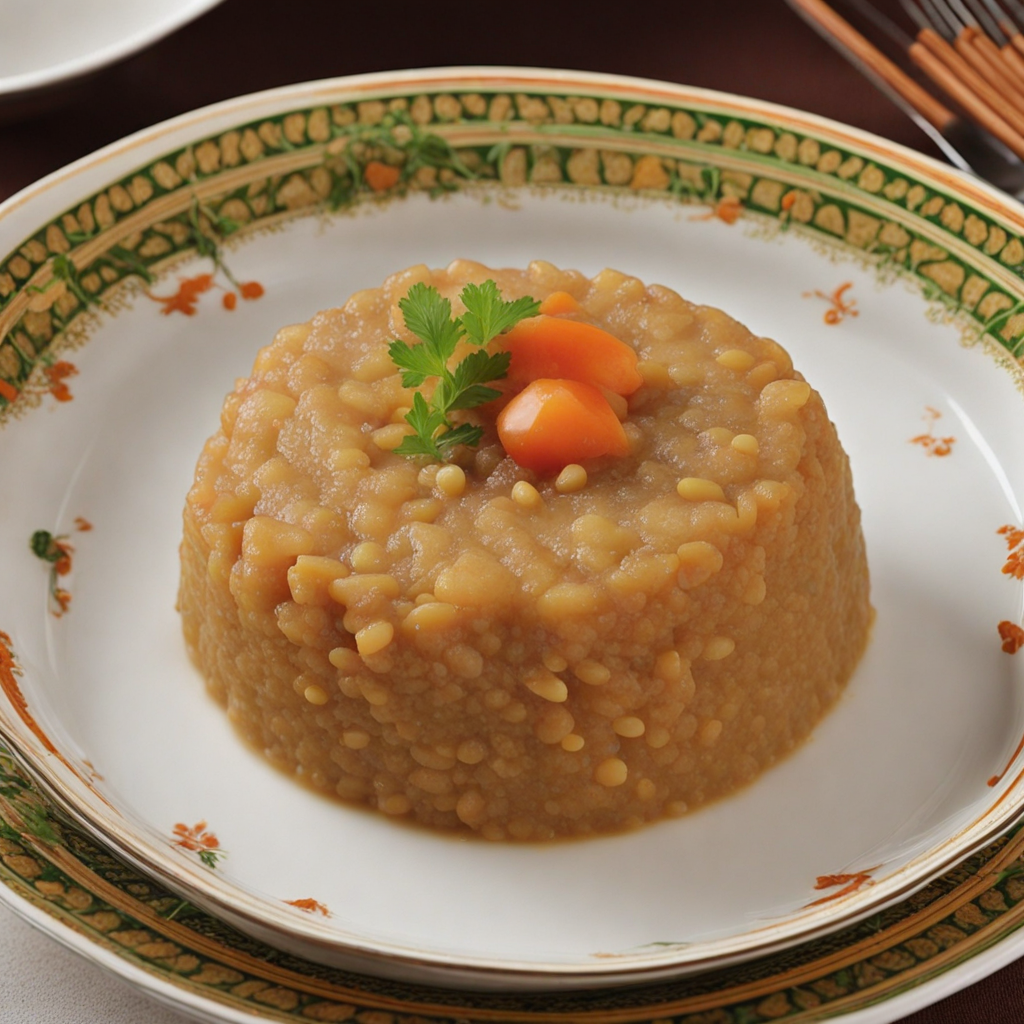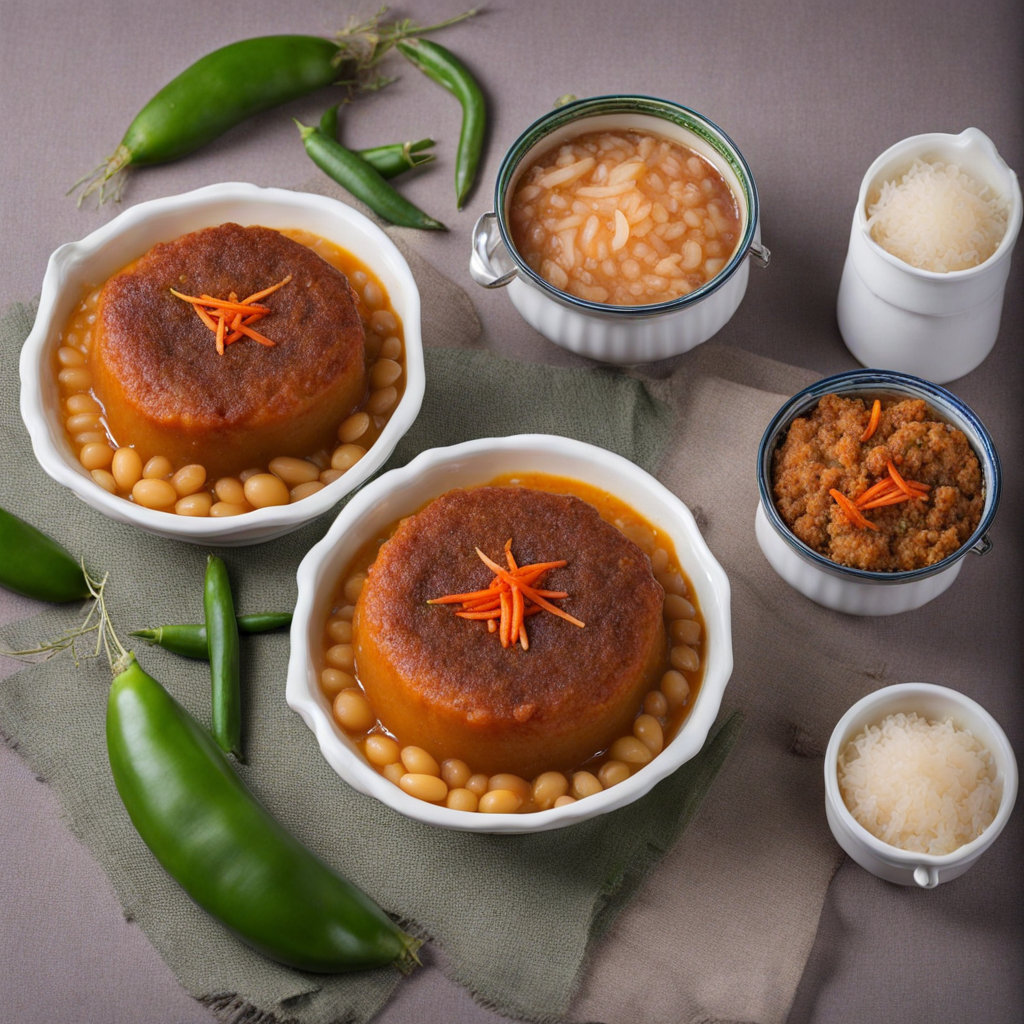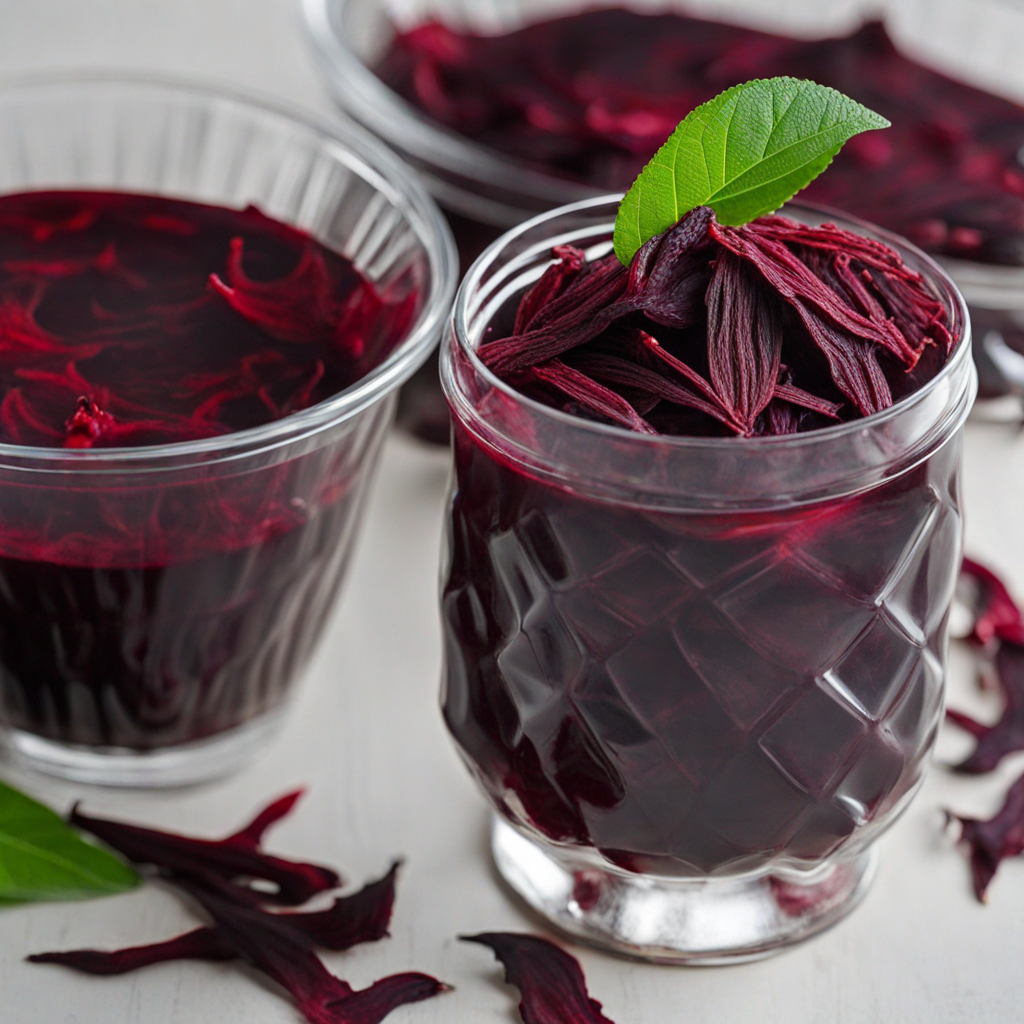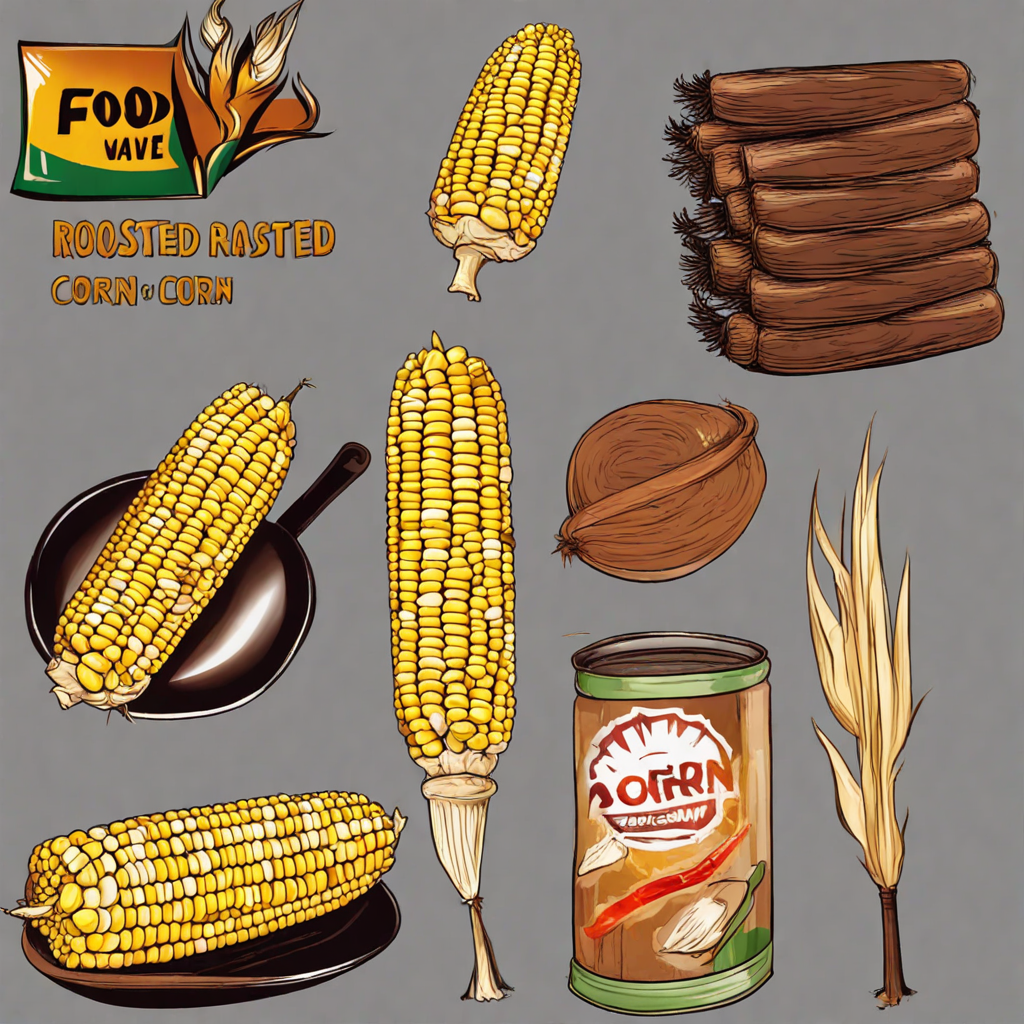Moi Moi
Moi Moi is a traditional Nigerian dish made primarily from blended steamed beans, commonly black-eyed peas or brown beans, which gives it a distinctive, earthy flavor. The beans are soaked, peeled, and ground to a smooth paste, then mixed with a variety of ingredients such as onions, peppers, and spices. The vibrant orange-red hue of the dish often comes from the addition of bell peppers and chili peppers, creating a visual appeal that is hard to resist. The texture is smooth and creamy, making it a delightful experience for the palate, especially when paired with rice or served as part of a larger meal. What sets Moi Moi apart is the versatility in its preparation. It can be customized with various additions like boiled eggs, fish, or even corned beef, depending on personal preferences or regional variations. The dish is typically steamed in a banana leaf or in small containers, allowing the flavors to meld beautifully during the cooking process. As it steams, the Moi Moi takes on a slightly firm yet tender texture, making it easy to slice and serve. It is often enjoyed as a side dish or a main course, making it a staple at celebrations and everyday meals alike. The flavor profile of Moi Moi is a delightful blend of savory and slightly spicy notes, balanced with the natural sweetness of the beans. Each bite offers a comforting warmth, enhancing the overall experience. The dish is not only tasty but also nutritious, packed with protein and fiber, making it a healthy choice for those looking to explore different cuisines. Enjoying Moi Moi is an adventure in itself, as it opens the door to the rich culinary heritage of Nigeria, inviting food lovers to savor its unique and wholesome taste.
How It Became This Dish
The History of Moi Moi: Nigeria's Steamed Bean Pudding Origins: The Birth of Moi Moi Moi Moi, a traditional Nigerian dish, is a steamed bean pudding made primarily from black-eyed peas or brown beans. Its origins can be traced back to the Yoruba people of southwestern Nigeria, where it has been a cherished staple for centuries. The name "Moi Moi" is derived from the Yoruba language, where "moi" can mean "to be smooth" or "to be soft," aptly describing the dish's texture. The preparation and enjoyment of Moi Moi are deeply intertwined with cultural rituals, family gatherings, and celebrations. The fundamental ingredient, beans, has been cultivated in West Africa for thousands of years. Archaeological evidence suggests that beans were domesticated in the region around 3000 BC. The Yoruba people, along with other ethnic groups in Nigeria, have long utilized beans in their diets due to their nutritional benefits, affordability, and versatility. Beans are rich in protein, fiber, and essential nutrients, making them an excellent dietary staple. Cultural Significance: A Symbol of Community and Celebration Moi Moi is more than just a dish; it is a symbol of community, unity, and celebration. It plays a significant role in various social events, including weddings, birthdays, and religious ceremonies. Traditionally, families would gather to prepare large quantities of Moi Moi, fostering a sense of togetherness and cooperation. The act of grinding the beans, mixing in spices, and wrapping the mixture in leaves is often a communal activity, with participants sharing laughter and stories as they work side by side. In Yoruba culture, food is a means of expressing love and hospitality. Serving Moi Moi to guests is a way to honor them, and the dish is often included in festive feasts. It is commonly served alongside jollof rice or as part of a larger spread during celebrations. During religious festivals, such as the annual Osun-Osogbo Festival, Moi Moi is prepared as an offering to the deities, reinforcing its spiritual significance. The preparation of Moi Moi also varies regionally and personally, with each cook adding their unique touch. Some recipes include ingredients like bell peppers, onions, eggs, and spices, making it a versatile and customizable dish. This adaptability allows Moi Moi to transcend cultural boundaries, appealing to a broad audience both within Nigeria and beyond. Development Over Time: From Tradition to Global Recognition As Nigeria has evolved, so has the preparation and consumption of Moi Moi. Historically, it was made using a simple method of grinding soaked beans with a mortar and pestle, then mixing it with water and spices before steaming in banana leaves or metal containers. This traditional method has been largely preserved, although modern conveniences like blenders have streamlined the process. In the 20th century, as urbanization increased and global influences permeated Nigerian culture, Moi Moi began to adapt to the changing culinary landscape. With the migration of people to cities, the dish became a popular street food, sold by vendors and enjoyed by busy professionals and students alike. This shift not only made Moi Moi more accessible but also introduced it to a diverse audience, leading to new interpretations and innovations. In contemporary times, Moi Moi has gained recognition outside of Nigeria, particularly in countries with large Nigerian diasporas. It is now featured in Nigerian restaurants across the globe, celebrated for its unique flavor and nutritional value. This international exposure has prompted chefs to experiment with the dish, incorporating ingredients from other cuisines and creating fusion versions that appeal to diverse palates. Additionally, the rise of social media and food blogs has played a pivotal role in popularizing Moi Moi. Pictures of beautifully plated Moi Moi, accompanied by vibrant sides, have captured the attention of food enthusiasts worldwide. Recipes are shared, adapted, and celebrated, creating a new generation of fans who appreciate this traditional dish. Nutritional Value and Modern Adaptations In recent years, the health-conscious movement has brought attention to the nutritional benefits of beans, further enhancing Moi Moi's reputation. The dish is naturally gluten-free, high in protein, and low in fat, making it an excellent choice for those seeking wholesome, plant-based options. As consumers become more aware of their dietary choices, Moi Moi stands out as a nutritious alternative to processed foods. Modern adaptations of Moi Moi reflect a growing interest in healthy eating. Some cooks experiment with alternative ingredients, such as quinoa or lentils, to cater to various dietary preferences. Vegan versions eliminate animal products altogether, while others explore the inclusion of superfoods like spinach or kale. These innovations not only preserve the essence of the dish but also expand its appeal, ensuring that Moi Moi continues to evolve in response to contemporary culinary trends. Conclusion: The Enduring Legacy of Moi Moi Moi Moi is more than a simple dish; it is a reflection of Nigeria’s rich cultural heritage, symbolizing community, tradition, and the joy of sharing food. Its journey from a traditional Yoruba staple to a globally recognized delicacy illustrates the adaptability and resilience of culinary practices over time. As the world becomes increasingly interconnected, Moi Moi serves as a culinary ambassador, inviting people to experience the flavors of Nigeria while celebrating the universal language of food. Today, as families gather to enjoy Moi Moi during celebrations or as a comforting meal at home, the essence of this dish remains unchanged. It continues to bring people together, transcending borders and bridging cultures, ensuring that its legacy endures for generations to come. Whether enjoyed at a bustling street stall in Lagos or a cozy family kitchen in London, Moi Moi encapsulates the spirit of Nigeria, offering a taste of history, community, and love in every bite.
You may like
Discover local flavors from Nigeria







